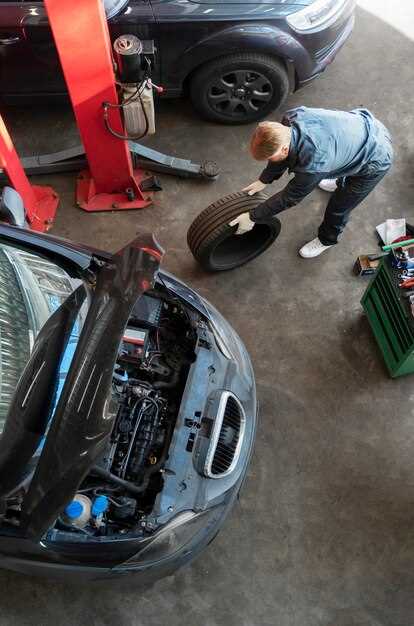
Maximizing your vehicle’s torque output is essential for achieving optimal performance, especially for those who seek enhanced acceleration and overall driving experience. Torque is the force that propels your car forward, making it a critical aspect of automotive tuning. By focusing on torque, you can improve your vehicle’s responsiveness, allowing for quicker starts and smoother power delivery throughout the RPM range.
In this guide, we will explore the various aspects of tuning your car specifically for peak torque performance. Understanding the interplay between engine components, tuning software, and exhaust systems is crucial. Each of these elements influences your engine’s ability to produce and maintain torque under different driving conditions.
Moreover, the quest for maximum torque involves not only modifications and upgrades but also a clear understanding of your vehicle’s factory specifications. This foundational knowledge will allow you to make informed decisions when selecting aftermarket parts or tuning solutions that best suit your driving goals. From adjusting air-fuel ratios to optimizing ignition timing, we will cover essential tuning strategies that can unlock your engine’s full potential.
Join us as we delve into the specifics of car tuning, showcasing practical tips and methods that can lead to significant improvements in your vehicle’s torque performance. Get ready to transform your driving experience with enhanced power and responsiveness.
Choosing the Right Intake and Exhaust System for Maximum Torque
The performance of your car’s engine can be significantly influenced by the intake and exhaust systems. To optimize torque output, it is crucial to select components that enhance airflow and reduce restrictions throughout these systems.
Starting with the intake system, a high-performance air intake can help improve engine breathing by allowing a greater volume of air to enter the combustion chamber. Look for systems that incorporate larger diameter tubing and high-flow air filters to minimize air resistance. Cold air intakes are particularly effective, as they draw in cooler air, which is denser and holds more oxygen, thus improving combustion efficiency.
Consider the shape of the intake manifold as well. A design that promotes smooth airflow, such as a long runner intake, can help achieve better torque in low to mid RPM ranges. Some aftermarket manifolds also feature variable geometry that can adjust for optimal airflow depending on engine speed.
Next, the exhaust system plays a vital role in determining how efficiently gases are expelled from the engine. A less restrictive exhaust allows for quicker exit of exhaust gases, reducing back pressure and improving overall torque. When selecting an exhaust system, opt for one with larger diameter piping and high-flow catalytic converters. Muffler design is also important; a straight-through design typically offers better performance compared to chambered mufflers.
When combining the intake and exhaust systems, it’s essential to ensure they are designed to work in harmony. Mismatched components can lead to imbalances in engine performance, negatively affecting torque. Consider tuning solutions that can be adjusted to accommodate the new systems, allowing for proper air-fuel mixture and ignition timing optimization.
Lastly, do thorough research on the products available and check for compatibility with your vehicle’s make and model. The right combination of intake and exhaust can transform your car, resulting in noticeable torque gains and an overall improved driving experience.
Optimizing Engine Tuning Parameters to Enhance Torque Delivery

To achieve peak torque performance, it is crucial to fine-tune various engine parameters. The three primary areas that influence torque delivery include fuel mapping, ignition timing, and air-fuel ratio. Each of these parameters needs to be carefully adjusted to cater to specific engine characteristics and driving conditions.
Fuel mapping defines how much fuel is injected into the combustion chamber at various engine loads and RPMs. An optimized fuel map ensures that the engine receives the correct amount of fuel for complete combustion, which maximizes torque output. A rich mixture can lead to increased torque at lower RPMs but may sacrifice efficiency and performance at higher speeds. Conversely, a lean mixture can improve efficiency but may reduce torque delivery. Therefore, conducting tests on a dynamometer can help determine the ideal fuel map for your engine’s needs.
Ignition timing is another critical factor in torque optimization. Advancing or retarding the timing alters when the spark plug ignites the air-fuel mixture. Timing that is too advanced can cause knocking, while timing that is too retarded can lead to incomplete combustion, both of which adversely affect torque. By experimenting with ignition timing across a range of RPMs, you can find the optimal point where maximum torque is achieved without compromising engine safety.
The air-fuel ratio (AFR) plays a vital role in torque production as well. A stoichiometric AFR (approximately 14.7:1 for gasoline engines) allows for optimal combustion efficiency, but the ideal ratio may vary depending on the specific application and modifications made to the engine. Richer mixtures can provide more torque at lower RPMs, while leaner mixtures may be beneficial for higher RPM performance. Tuning the AFR based on real-world testing results is essential for enhancing torque delivery.
Additionally, adjusting the engine’s variable valve timing can significantly impact torque characteristics. Tuning the camshaft profile allows for flexibility in valve timing, which can optimize airflow into and out of the combustion chamber, thus enhancing torque production at various RPM ranges. Implementing adjustable cam gears or aftermarket camshafts can provide the necessary adjustability to maximize performance.
Finally, it’s important to monitor and log data during tuning sessions. Using advanced diagnostic tools and software can help identify how changes in parameters affect torque delivery, allowing for real-time adjustments and fine-tuning. A systematic approach to engine tuning not only enhances torque but also improves overall engine performance, reliability, and driving experience.
Assessing the Impact of Gear Ratios on Torque Output

Gear ratios play a crucial role in determining a vehicle’s torque output and overall performance. The gear ratio is the ratio of the number of teeth on the driven gear to the number of teeth on the driving gear. By altering these ratios, you can influence how torque is transmitted from the engine to the wheels.
A lower gear ratio, often referred to as a “numerically higher” ratio, such as 4:1, multiplies the engine’s torque more effectively. This configuration provides greater acceleration and pulling power, making it ideal for applications requiring quick starts or heavy loads. Vehicles equipped with lower gear ratios typically exhibit enhanced torque delivery at lower RPMs, which is beneficial in off-road situations or when towing.
Conversely, a higher gear ratio, such as 3:1, reduces the engine’s torque multiplication effect. This configuration is more suited for achieving higher top speeds and improved fuel efficiency. In situations where sustained highway driving occurs, higher gear ratios enable the engine to operate at lower RPMs, thereby reducing wear and fuel consumption. However, this can come at the cost of reduced torque performance during acceleration.
To optimize torque output, it’s essential to assess the intended use of the vehicle. For performance applications focused on rapid acceleration, lower gear ratios may be advantageous. For long-distance travel or racing setups prioritizing speed, higher gear ratios can prove beneficial.
Moreover, the overall impact of gear ratios on drivetrain losses must not be overlooked. Every mechanical component introduces some resistance, and an ideal gear ratio should consider the balance between torque multiplication and efficiency during power transfer. Evaluating the complete drivetrain setup, including the differential and wheel size, further enhances gear ratio selection to achieve peak torque performance.
Ultimately, understanding how gear ratios influence torque allows for informed decisions in tuning a vehicle for specific performance goals. By strategically selecting gear ratios, you can significantly enhance torque output, resulting in improved acceleration and driving experience.

